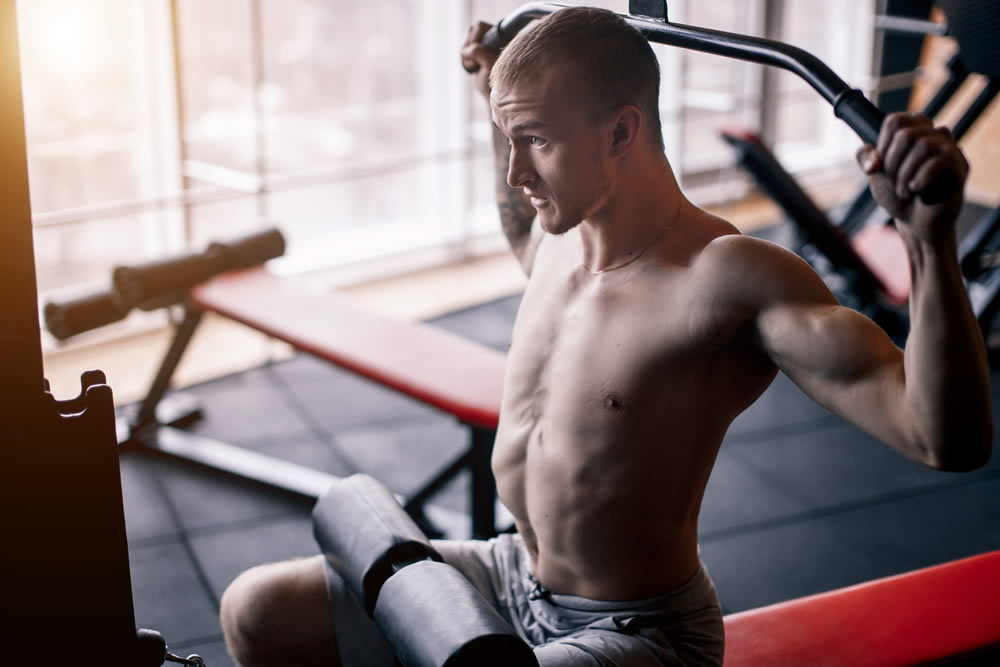Upper Body Strength Exercises

How Increasing Upper Body Strength Helps You
Increasing upper body strength offers a wide range of benefits that can positively impact a person's daily life, physical health, and overall well-being. Here are some of the key advantages of improving upper body strength:
Improved Functional Abilities:
Enhanced upper body strength enables individuals to perform daily tasks more easily, such as carrying groceries, lifting objects, pushing or pulling heavy doors, and reaching for items on high shelves.
Enhanced Sports Performance:
Many sports and physical activities require upper body strength. Strong shoulders, chest, and arms can contribute to better performance in activities like swimming, tennis, climbing, and wrestling.
Injury Prevention:
A well-balanced upper body can help stabilize the shoulder and back muscles, reducing the risk of injuries, especially in sports and activities that involve repetitive motions or heavy lifting.
Posture Improvement:
Strengthening the upper back and shoulders can help correct poor posture and reduce the likelihood of developing conditions like rounded shoulders or forward head posture.
Pain Reduction:
Improved upper body strength can alleviate muscle imbalances, which can contribute to neck, shoulder, and upper back pain. Stronger muscles can help support the spine and maintain proper alignment.
Increased Bone Density:
Resistance training, which includes upper body strength exercises, can promote bone health and reduce the risk of osteoporosis by stimulating bone growth and density.
Metabolism and Fat Loss:
Muscle tissue burns more calories at rest than fat tissue. Increasing upper body muscle mass can boost metabolism, making it easier to manage body weight and reduce body fat.
Improved Confidence and Self-Esteem:
Gaining strength and muscle in the upper body can boost self-confidence and self-esteem, as it's a tangible sign of physical progress and achievement.
Better Aesthetics:
Many people strive to build a well-defined upper body for aesthetic reasons. A strong upper body can result in a more sculpted and attractive physique.
Overall Health Benefits:
Strength training, including upper body exercises, is associated with numerous health benefits, including improved cardiovascular health, better insulin sensitivity, and reduced risk of chronic diseases like heart disease and diabetes.
Psychological Well-Being:
Regular strength training can help reduce stress, anxiety, and depression by promoting the release of endorphins, which are natural mood enhancers.
It's important to note that upper body strength should be developed as part of a balanced fitness program that includes lower body strength, cardiovascular exercise, flexibility training, and core stability. Consult with a fitness professional or healthcare provider to create a safe and effective strength training program tailored to your individual goals and needs.
Upper Body Strength Exercises To Include In Your Training
Building upper body strength is an essential component of a well-rounded fitness routine. Including a variety of exercises can help you target different muscle groups and achieve a balanced upper body. Here are some effective upper body strength exercises to include in your training:
Push-Ups:
Start in a plank position with your hands slightly wider than shoulder-width apart.
Lower your body towards the ground by bending your elbows while keeping your body in a straight line.
Push back up to the starting position.
Perform 3 sets of 10-15 repetitions.
Dumbbell Bench Press:
Lie flat on a bench with a dumbbell in each hand, arms extended above your chest.
Lower the dumbbells to the sides of your chest, keeping your elbows at a 90-degree angle.
Push the dumbbells back up to the starting position.
Perform 3 sets of 8-12 repetitions.
Pull-Ups:
Find a sturdy horizontal bar and grab it with your palms facing away from your body.
Hang from the bar with your arms fully extended.
Pull your body up towards the bar until your chin is above the bar.
Lower your body back down to the starting position.
Perform 3 sets of as many repetitions as you can.
Dumbbell Rows:
Stand with your feet shoulder-width apart, holding a dumbbell in each hand.
Bend your knees slightly and lean forward at the hips.
Pull the dumbbells up towards your hips, keeping your elbows close to your body.
Lower the dumbbells back down to the starting position.
Perform 3 sets of 10-12 repetitions per arm.
Shoulder Press:
Sit or stand with a dumbbell in each hand at shoulder height, palms facing forward.
Press the dumbbells upward until your arms are fully extended overhead.
Lower the dumbbells back to shoulder height.
Perform 3 sets of 8-10 repetitions.
Tricep Dips:
Find parallel bars or use the edge of a sturdy surface like a bench or chair.
Lower your body by bending your elbows until they're at a 90-degree angle.
Push your body back up to the starting position.
Perform 3 sets of 12-15 repetitions.
Bicep Curls:
Stand with a dumbbell in each hand, arms extended by your sides, palms facing forward.
Curl the dumbbells up towards your shoulders while keeping your upper arms stationary.
Lower the dumbbells back to the starting position.
Perform 3 sets of 10-12 repetitions.
Plank:
Start in a push-up position but with your weight on your forearms instead of your hands.
Keep your body in a straight line from head to heels.
Hold this position for as long as you can, aiming for at least 30 seconds to start.
Remember to warm up before starting your upper body workout and cool down afterward with some stretching. It's also essential to use proper form to prevent injury and consult a fitness professional or physician if you have any medical concerns or injuries before starting a new exercise routine. Gradually increase the weight and intensity of your workouts as your strength improves.